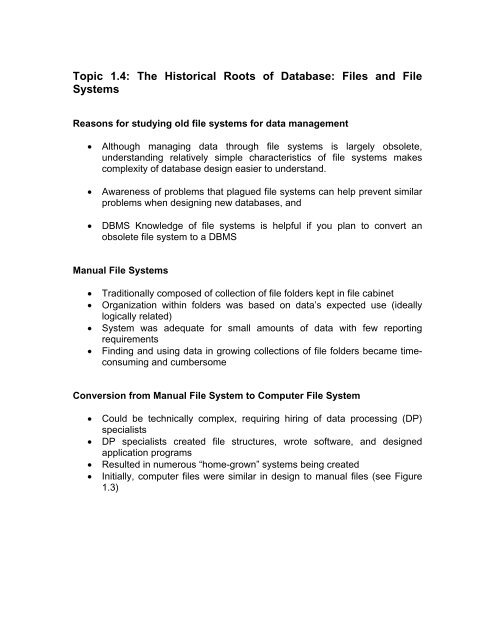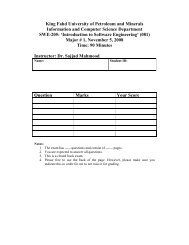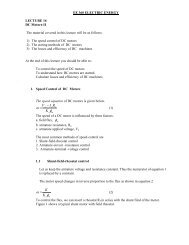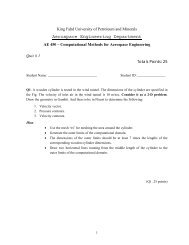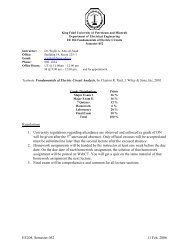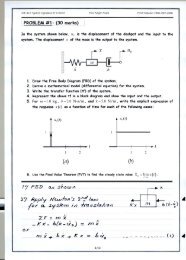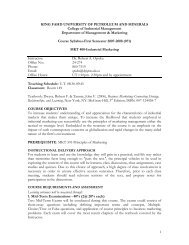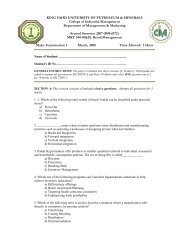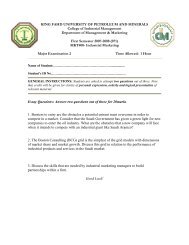Topic 1.4: The Historical Roots of Database: Files and File Systems
Topic 1.4: The Historical Roots of Database: Files and File Systems
Topic 1.4: The Historical Roots of Database: Files and File Systems
You also want an ePaper? Increase the reach of your titles
YUMPU automatically turns print PDFs into web optimized ePapers that Google loves.
Note that the CUSTOMER file shown in Figure 1.3 contains 10 records. Eachrecord is composed <strong>of</strong> nine fields:C_NAME,C_PHONE,C_ADDRESS,C_ZIP,A_NAME,A_PHONE,TP,AMT, <strong>and</strong>REN.Using the contents <strong>of</strong> the CUSTOMER file the DP specialist wrote programsfor reports:• Monthly summaries <strong>of</strong> types <strong>and</strong> amounts <strong>of</strong> insurance sold by agents• Monthly reports about which customers should be contacted forrenewal• Reports that analyzed ratios <strong>of</strong> insurance types sold by agent• Customer contact letters summarizing coverageAs time went on, additional reports were written as required by the SalesDepartment. Another file called Sales was created to hold contents whichhelped track daily sales. Additional useful sales reports were generated forthe Sales Department. Sales department started to feel the benefits <strong>and</strong> value<strong>of</strong> the generated useful reports for decision making.Other departments such the Personal Department knew about the newautomated Sales <strong>File</strong> System. So, they requested the DP Specialist to writeor develop a new database to automate the manual Payroll system for them.So, the DP Specialist has so far created:• CUSTOMER database for the sales department• SALES database created for sales department• AGENT database created for personnel departmentAs number <strong>of</strong> databases increased, small file system evolved as shown inFigure 1.5Each file used its own application programsEach file was owned by individual or department who commissioned itscreation
As system grew, dem<strong>and</strong> for DP’s programming skills grewAdditional programmers hiredDP specialist evolved into DP manager, supervising a DP department<strong>The</strong> primary activity <strong>of</strong> department (<strong>and</strong> DP manager) remained programming<strong>The</strong> diagram shown in Figure 1.6 shows the more advanced databasemanagement system was evolved from the old file system.<strong>Historical</strong> BackgroundComputerInventionin the 1950sData ProcessingApplicationsstarted in the 1950sOld <strong>File</strong> System s<strong>of</strong>twarewas used to implement<strong>and</strong> manage the dataprocessing applications<strong>Database</strong>ManagementSystem s<strong>of</strong>twareOld <strong>File</strong> System hasproblemsNeed for betterData processing <strong>and</strong>Managements<strong>of</strong>twareFigure 1.6 <strong>Historical</strong> Background <strong>of</strong> the Old <strong>File</strong> SystemConcept CheckWhat are the reasons for studying old file systems for data management?


